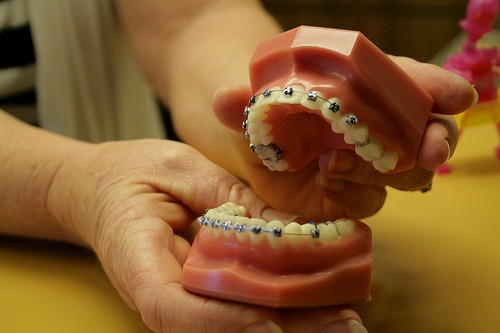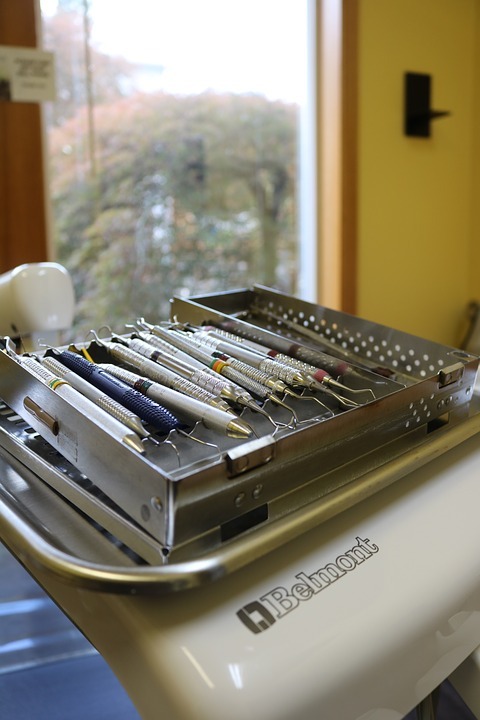
by | Mar 27, 2017 | Invisalign, Invisalign Teen, Orthodontic Treatments, Team Demas Orthodontics

Understanding How Self-Ligating Braces Work
Misaligned teeth have been impacting people’s smiles for a long time. Braces have been utilized for hundreds of years as a way to straighten the misaligned teeth of children, as well as adults. There have been developments in orthodontics concerning the design of braces. The goal has always been to make them more comfortable and easily accessible. With traditional braces, a person’s mouth has archwires, brackets, and bands in place to put pressure on the teeth. This is done so the teeth can be put in proper alignment. This method requires regular orthodontic visits so the bands and archwires can be adjusted as needed. This is how traditional braces are kept working correctly. Now, there is a new type of braces available. Self-ligating braces utilize clips and not rubber bands.
Read more…

by | Mar 16, 2017 | Smile Quote, Team Demas Orthodontics

Choose Soft and Friendly Foods While Wearing Braces or Aligners
You need to consume a lot of minerals and vitamins to strengthen your teeth during orthodontic treatment. However, you might find it difficult to chew food right after beginning to wear aligners or braces because the tissues in your mouth can feel sensitive. It is still easy to consume vital nutrients by making a green vanilla mint smoothie and using a blender to whip the ingredients. The recipe for this beverage includes the following:
• Coconut milk
• Fresh mint leaves
• Vanilla extract
• Fresh spinach
• Frozen banana
Read more…

by | Mar 7, 2017 | General Articles

gif courtesy of giphy.com
Orthodontic emergencies don’t happen too often, but when children are involved, there’s bound to be something that loosens, breaks or irritates. In most cases, a temporary solution can be done at home. If it’s a more serious problem, it’s important to know when to get help.
Types of Orthodontic Emergencies
Not all problems your kids will encounter with braces need the immediate attention of an orthodontist. The first set of tips on how to deal with emergencies involves issues they may have with the braces and how you can help them solve the problem.
• Sore teeth – During the first 24 to 72 hours after braces are applied, the teeth may ache or feel sore. To relieve any pain, take Tylenol and eat a soft food diet.
• Mouth sores – It is possible for sores to develop inside the mouth when braces are new. Eventually, the skin becomes used to the braces rubbing against the lips and cheeks and the sores heal. For relief, a small amount of cotton or wax can be placed on the brace where the irritation occurs.
• Broken or loose braces/brackets – If teeth are brushed too vigorously or the wrong foods are eaten, brackets can come loose. If it can be easily removed, the bracket should be brought to the next appointment so it can be reattached.
• Poking or loose wire – Sometimes, the wire is still attached to the bracket but sticking out. The patient can push it back gently with a q-tip or pencil eraser and use orthodontic wax to keep the wire from cutting the inside of the gum or cheeks.
• Loose teeth – It is common for teeth to loosen while wearing braces. The constant pressure and force of the braces help the teeth shift to a new position. As with any concerns, have it checked at the next appointment.
• Headgear issues – If wearing a headgear is causing a problem, it needs to be adjusted to prevent any unwanted jaw or tooth movement. Call your orthodontist as soon as possible.
Read more…

by | Nov 17, 2016 | Invisalign, Invisalign Teen, Orthodontic Treatments, Smile Quote, Team Demas Orthodontics

This warm, spicy winter soup makes for a filling, nutritious, and friendly food. Many people aren’t familiar with celery root, also known as celeriac, but it has a unique earthy taste that this recipe showcases.
What makes this recipe tooth friendly? Lots of Vitamin A, which helps build strong bones and teeth, and vitamin C, which promotes gum health. Plus, a smooth creamy texture that won’t stick to teeth or braces!
Read more…

by | Nov 1, 2016 | General Articles, Team Demas Orthodontics
Because of its all-around movement, which involves moving back and forth, up and down, and side to side, the jaw’s temporomandibular joint is arguably one of the most complex joints in the human body. For many people, dismissing abnormal jaw pains is a common tendency, unless the pain is either severe or persistent. Unfortunately, almost every single type of jaw pain indicates an issue with the jaw’s functionality, which includes movement when talking or chewing. Depending on the cause, you might have to seek the services of an orthodontist to treat some of the pains experienced in the jaw. Knowledge of the various factors that induce or contribute to odd jaw pains is, therefore, necessary.
Causes of Abnormal Jaw Pains
Since moving the jaw around involves a variety of joints, muscles, bones, and tendons, so many different things can go wrong. Although simple cases such as overworking the joints are among the causes of abnormal jaw pains, most types of jaw pains are caused by more severe issues including:
Structural Disorders and Fractures
Fractures and other skeletal disorders could be the result of an assault, accidents, or underlying diseases, and they usually stress the entire jaw since it loses alignment. Such disorders will almost always result in dull and constant pains in the jaw, inflammation, numbness, and even deformity. The occurrence of any jaw disorder necessitates seeking immediate medical attention, preferably from an orthodontist.
Read more…









